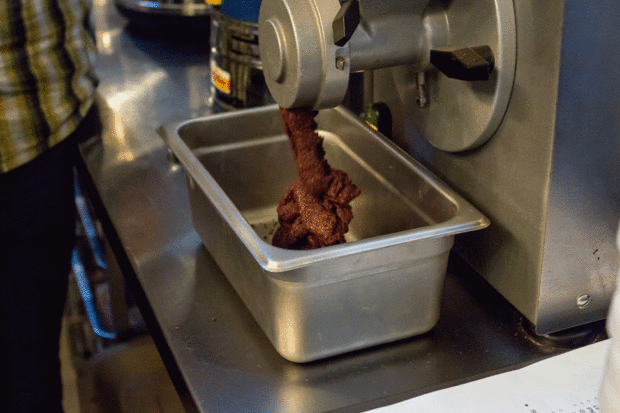
From Singapore to the USA and all around Europe, Edible Innovations profiles food makers that engage in improving the global food system at every stage, from production to distribution to eating and shopping. Join us as we explore the main trends in the industry from a maker perspective. Chiara Cecchini of Food Innovation Program — an ecosystem with a strong educational core that promotes food innovation as a key tool to tackle the great challenges of the future — introduces you to the faces, stories, and experiences of food makers around the globe. Check back on Tuesdays and Thursdays for new installments.
Todd Masonis and Cameron Ring both used to work at a tech company called Plaxo they founded in 2001. They sold the company to Comcast in 2008 and left in 2009. After the sale, they both found themselves with the opportunity to pursue latent interests. One of Masonis’ main ones was chocolate.
“I’ve always had a sweet tooth,” said Masonis, “and I was curious to know more about chocolate and how to make it. That’s what precipitated us taking over a friend’s garage to set up a tiny factory.”
Chocolate Makers
When the two first started out, they were not intending to create a chocolate company. They did not have a detailed business plan or ten-year financial projections, they were simply making chocolate to see if they could.
They soon discovered that they were actually a part of a new maker movement in chocolate. Many people were discovering new possible flavors with rediscovered chocolate making techniques. When Masonis and Ring started in 2010, there were only a handful of small companies (just over 200) making chocolate from the bean in America.
However, start-ups like Masonis and Ring’s are making that number grow. “We are proud to be part of this broader movement and shift that is happening in chocolate” said Masonis. The two decided to pursue chocolate making as a career and co-founded Dandelion Chocolate (@DandelionChoco).
Simple Yet Delicious
Their chocolate making process is pretty simple, but yields delicious results.
They start with some cocoa beans which are roasted in an oven or coffee roaster. Each kilogram of beans at 325F takes about 15-20 minutes or so to cook. The beans are then removed from the heat and left to cool. The beans are then peeled between thumb and forefinger with a twisting motion until the shell slides off. The inside of the bean, when broken up, are called cocoa nibs.
Now, a mini-melanger is needed. They gradually add a few small scoops of nibs at a time and start to add the sugar. If they are making a 70% batch, they use 70% nibs, 30% sugar. They let this run for many hours until the mixture is smooth. The ground chocolate is poured out into ice cream trays or silicon flexi molds, cooled in the refrigerator for at least 30 minutes, and then popped out of the molds. That is it!
A Love of Chocolate
Although Ring has since left to co-found Honor, Masonis remains at Dandelion making chocolate. His main drive for continuing the work is the knowledge that chocolate makes people happy. Masonis remarks that there are many people who walk into the factory to tell the staff how much they love the product. In a tech space, it is rare for people to stop by and say how much they love the final product, but the chocolate industry is full of customers more than happy to share their experiences in person.
Dandelion is no longer in a garage and people do stop by to say how much they love the chocolate. Walking inside the factory, you can find nothing but smiles. Not all those smiles belong solely to customers either. You will see the same happiness on the faces of the farmers who supply the beans for the bars.
The Right Type of Impact
Masonis points out that it is important to “do the right thing,” especially in respect to the farmers. Instead of third party certifications, like fair trade, he personally visits the farms Dandelion works with and publishes a sourcing report each year with information about each farm. The names of the person who sourced the beans are put on the back of each bar.
Customers are also encouraged to swing by the shop in San Francisco and talk with Greg D’Alesandre, Dandelion’s Chocolate Sourcerer, when they have additional questions about where the chocolate comes from (provided he is not on a sourcing trip).
The team behind Dandelion Chocolate wants its customers to know where their chocolate comes from and how it is made. The back of their cafe leads directly to the factory. If you come in, you can see every step of their production process, from beans to bars. Above the cafe, a public pastry kitchen has bean sourcing, samples to taste, classes to take, and notes on all of the general operations of the company.
ADVERTISEMENT








